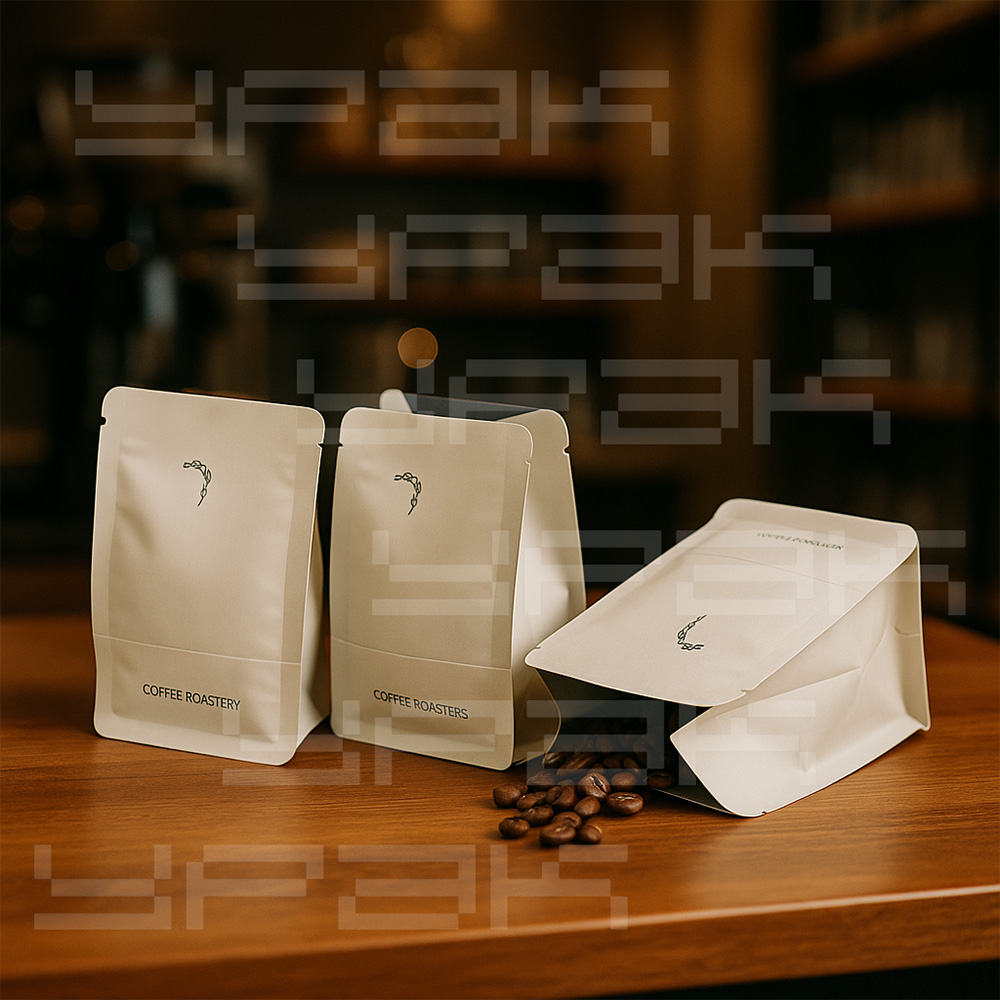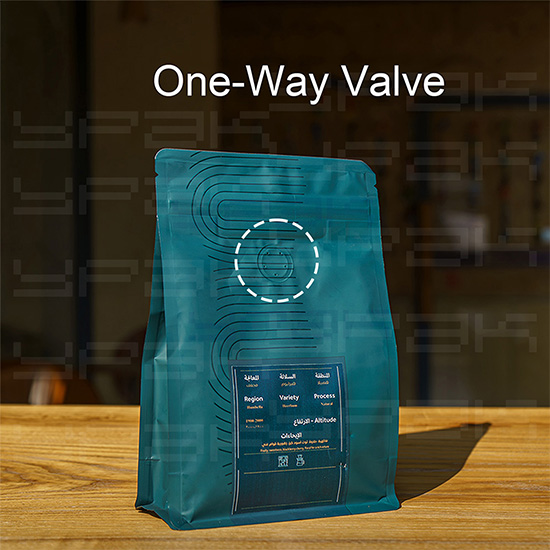The Real Lifespan of Bagged Coffee: The Ultimate Freshness Reference Point for Coffee Drinkers
We’ve all been there, gazing at a bag of beans. And we want to learn the answer to the big question:How long does bagged coffee truly last? It may sound simple, but the answer is surprisingly complicated.
Here's the short answer. Unopened whole bean coffee can be stored for 6 to 9 months.Ground can be stored for a shorter time, approximately 3 to 5 months. But when you open the bag, the clock is ticking — you have just a couple of weeks before time runs out and the flavor is at its best.
Nonetheless, what the answer turns out to be will depend on many things. It also matters what kind of bean you use. The time that you roast is crucial. The bag technology even matters most. This guide will help you navigate every factor. We will make each cup you brew fresh and delicious.
Bagged Coffee Shelf Life: The Cheat Sheet

Do you want a straightforward, practical response? This cheat sheet is for you. It tells you how long bagged coffee will last in various circumstances. Take a cue from this to sample your own pantry coffee.
Remember these time frames are for peak flavor and smell. Coffee is often still safe to drink beyond these dates. But the flavor will be far milder.
Estimated Freshness Window for Bagged Coffee
| Coffee Type | Unopened Bag (Pantry) | Opened Bag (Properly Stored) |
| Whole Bean Coffee (Standard Bag) | 3-6 Months | 2-4 Weeks |
| Whole Bean Coffee (Vacuum-Sealed/Nitrogen-Flushed) | 6-9+ Months | 2-4 Weeks |
| Ground Coffee (Standard Bag) | 1-3 Months | 1-2 Weeks |
| Ground Coffee (Vacuum-Sealed Bag) | 3-5 Months | 1-2 Weeks |
The Science of Stale: What Happens to Your Coffee?
Coffee doesn’t go bad like milk or bread does. Instead, it goes stale. This gives up the fantastic smells and tastes that distinguish candy in the first place. This occurs thanks to a small number of crucial foes.
Here are the four enemies of coffee freshness:
• Oxygen: hat is the issue. Oxidation (fueled by oxygen) breaks down the oils that give coffee its flavor. What this does is it gives a taste that is flat or worse.
• Light: even high-wattage indoor lights — can be destructive to coffee. The flavor compounds inside the beans disintegrate when light rays come into contact with them.
• Heat: Warmth speeds up all chemical reactions. Storing coffee near an oven makes it go stale much faster.
• Moisture: Roasted coffee despises water. It can ruin the flavor. As a last resort, excessive moisture can and does form into mold in some rare cases.
Grinding coffee makes this process more intense. When you crush the coffee, you expose a thousand more times the surface area. This is a lot more coffee: much more of it is exposed to the air. The taste starts to dissipate practically immediately.
Not All Bags Are Created Equal: How Packaging Protects Your Brew

The bag your coffee comes in is more than a bag — it’s technology created to fend off those four enemies of freshness. Knowing the bag can help you determine how long your bagged coffee will really last you.
From Basic Paper to High-Tech Pouches
Once upon a time, coffee came in plain paper bags. These provided almost no barrier to oxygen or moisture. Nowadays, the majority of good coffee is packaged in multi-layered bags.
Said modern takeout bags might even have a foil or plastic liner. This liner is a powerful protector that closes off oxygen, light, and moisture. Dress code: Mother Nature understands the importance of a wardrobe—it preserves the priceless beans within.
The Magic of the One-Way Valve

Ever wondered what that little piece of plastic is on bags of specialty coffee? That is a one-way valve. It is a key feature.
Coffee releases carbon dioxide gas for a few days after being roasted. The valve allows this gas to escape. If it couldn’t escape, the bag would puff up, and could even explode. The valve releases gas, but doesn’t let any oxygen in. A valve-sealed bag is a good indication that you’re getting fresh-roasted, quality coffee.
The Gold Standard: Vacuum-Sealing and Nitrogen Flushing
Some roasters take protection to the next level. Vacuum-sealing removes the air from the bag before it is sealed. This is very effective for extending shelf life because it removes the main enemy: oxygen. Research has demonstrated the effectiveness of vacuum packaging in slowing down the oxidation process. It keeps coffee fresh for months.
An even more advanced method is nitrogen flushing. In this process, the bag is filled with nitrogen. This inert gas pushes all the oxygen out, creating a perfect, oxygen-free space for the coffee and preserving flavor for a very long time.
Why Your Choice of Bag Matters
When you see a roaster using high-tech packaging, it tells you something. It shows they care about freshness and quality. High-quality coffee pouches are truly an investment in flavor. The technology behind modern coffee bags is a key part of the coffee experience. The entire coffee packaging industry works hard to solve this freshness challenge, with companies like YPAK COFFEE POUCH helping coffee lovers everywhere.
A Coffee's Life in Flavor: A Practical Freshness Timeline

The numbers on a chart are useful, but what does coffee freshness actually taste and smell like? Editor's note: Take a journey of the coffee bean from its peak to its end. This timeline it will help you figure out how much life your bagged coffee has left.
The First Week (Post-Roast): The "Bloom" Phase
In the first few days after roasting, coffee is alive and vibrant.
- Smell: The smell is intense and complex. You can easily pick out specific notes, like bright fruit, rich chocolate, or sweet flowers.
- Taste: The flavor is dynamic and exciting, with a bright acidity and a clear sweetness. This is the absolute peak of flavor.
Weeks 2-4: The "Sweet Spot"
The coffee is bright and still alive in the first couple of days after roasting.
- Smell: The smell is still very strong and inviting. It might be slightly less sharp than the first week, but it's full and pleasant.
- Taste: The coffee is incredibly smooth and well-balanced. The bright notes from the first week have mellowed, creating a harmonious, delicious cup.
Months 1-3: The Gentle Fade
After the first month, the decline begins. It is slow at first, but it is happening.
- Smell: You will notice the smell is weaker. The unique, complex notes start to disappear, and it just smells like generic coffee.
- Taste: The flavor becomes flat and one-dimensional. The exciting acidity and sweetness are mostly gone. This is the beginning of stale coffee.
3+ Months: The "Pantry Ghost"
At this stage, the coffee has lost almost all of its original character.
- Smell: The smell is faint and can be papery or dusty. If the oils have gone bad, it might even smell slightly rancid.
- Taste: The coffee is bitter, woody, and lifeless. It provides caffeine but no real pleasure, making it unpleasant to drink.
5 Golden Rules for Storing Bagged Coffee to Maximize Freshness

You’ve purchased fantastic coffee in a fantastic bag. Now what? The last step is an appropriate storage. It is designed to help protect your investment and whether you are in the mood for a single cup of coffee or an entire carafe, the brew it delivers is delicious. To keep your coffee fresh, follow these five rules.
1. Leave the Bag. Its work has largely been completed once you’ve opened the original bag. If it isn’t a really great zip lock, transfer the beans to an airtight container. It’s best to use containers that block light.
2. Seek the Shadows. Keep your coffee container in a cool,dark and dry location. A pantry or cupboard is ideal. Never keep it on a sunny counter or near your oven, where heat will destroy it in no time.
3. Buy What You Need. It is tempting to buy a giant bag of coffee to save money, but it's better to buy smaller bags more often. Experts at the National Coffee Association recommend buying enough for one or two weeks. This ensures you are always brewing at peak freshness.
4. Decode the Dates. Seek out the “Roast Date” on the bag. This date is when the clock on taste for coffee began winding down. A “Best By” date is even less useful: It could be a year or more after the coffee was roasted. Make sure to stick with coffee that has a fresh roast date.
5. The Freezer Debate (Solved).Freezing coffee every day is an iffy proposition. When you take it out and put it in, you get condensation, which is water. The only good reason to put your beans in the freezer is if you’re storing them for a very long time. When you buy a large bag, portion into small, weekly amounts. Suction-seal each portion and freeze in a deep freezer. Pull one out when you need it, give it time to thaw completely before you open it. Never refreeze coffee.
Conclusion: Your Freshest Cup Awaits
So just how long does bagged coffee last? The freshness journey begins with a recently roasted date, that is protected by a premium, quality responsive coffee bag, then kept secure in smart storage in your home.
Post time: Oct-03-2025







